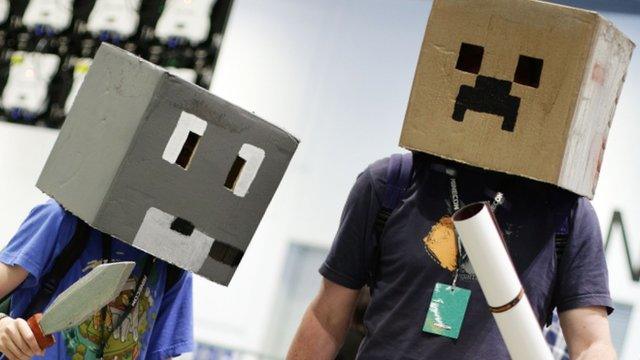First Hololens kit to cost $3,000
- Published

The developers' edition of Hololens will cost $3,000
Microsoft has started taking orders for a developers' edition of its Hololens augmented reality headset.
The test kit will cost $3,000 (£2,160) and will be sent to buyers in March.
Augmented reality glasses overlay computer-generated images on the wearer's real-world surroundings, unlike virtual reality which replaces the entire field of vision with images.
One expert said augmented reality devices were still at an "experimental" stage.
Microsoft is not alone in developing augmented reality headsets
"I don't expect Hololens to be a mass market product due to its pricing," said Piers Harding-Rolls of IHS Technology.
"Like the early VR headsets, this will appeal to technology enthusiasts with large amounts of disposable income.
"But I think we're a good few years away from compelling consumer AR smart glasses which have the desirable content and are cheap enough to drive a broader interest in the technology."

Early adopter?
$3,000 (£2150) - Hololens development kit (February 2016)
$1,500 (£1070)- Google Glass developer edition (April 2014)
$840 (£600) - Sony SmartEyeglass developer edition (February 2015)
$599 (£430) - Oculus Rift development kit (January 2016)
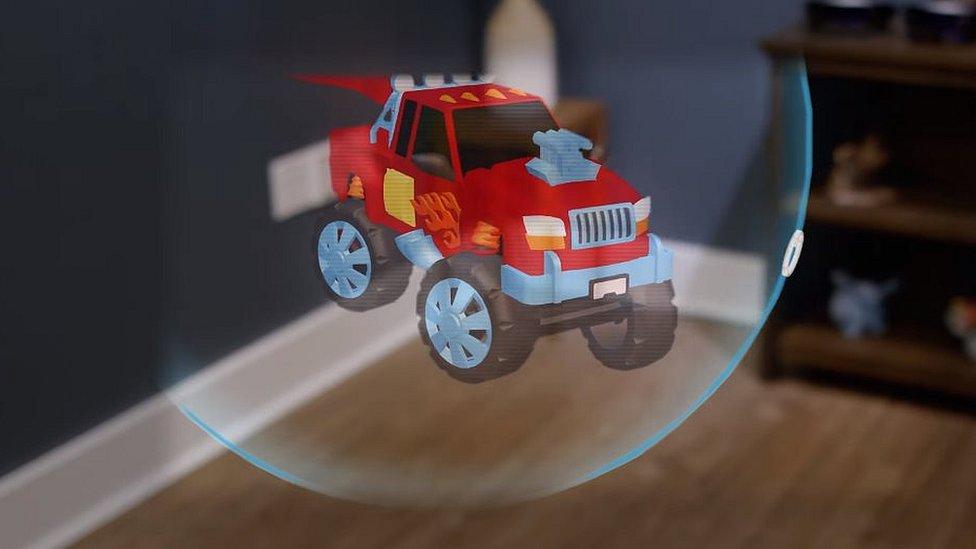
Critics have highlighted Hololens's limited field of view
First apps
Microsoft has stressed its developers' edition of Hololens is designed for app creators, to encourage the production of software for the device before it is more widely available.
The company said consumer availability would follow "further down the line".
It also detailed the first seven native programs available for Hololens.
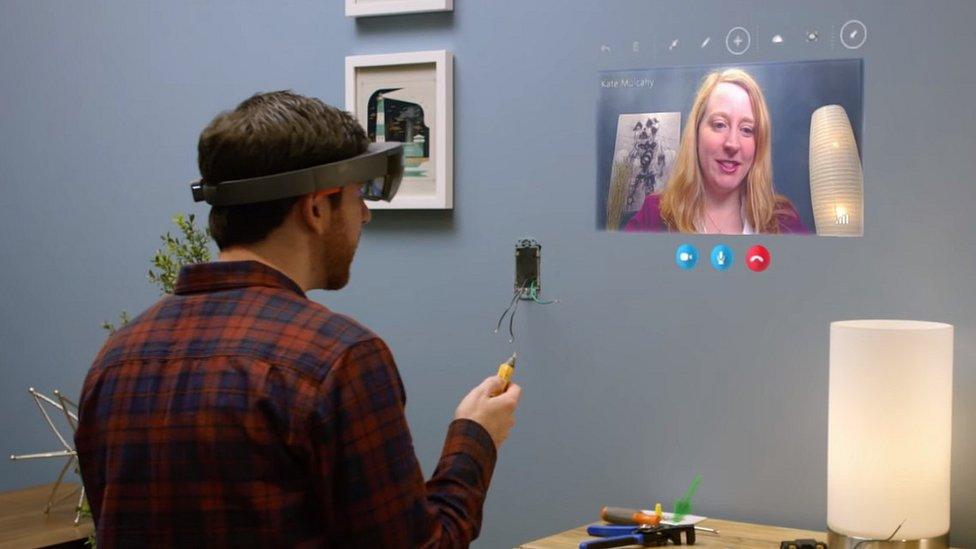
Video-calling app Skype is one of the first titles available
Among them are:
Skype - for video calling friends and family
HoloTour - which lets the wearer look at 360 degree images of world cities
HoloStudio - lets developers build 3D objects
RoboRaid - a first-person shooting game
The device will also run a game called Young Conker - a spin-off of cult hit Conker's Bad Fur Day, which told the story of a foul-mouthed squirrel trying to get home to his girlfriend.
A video of Young Conker has been negatively received by fans of the original game, who have eagerly been awaiting a sequel aimed at mature audiences.
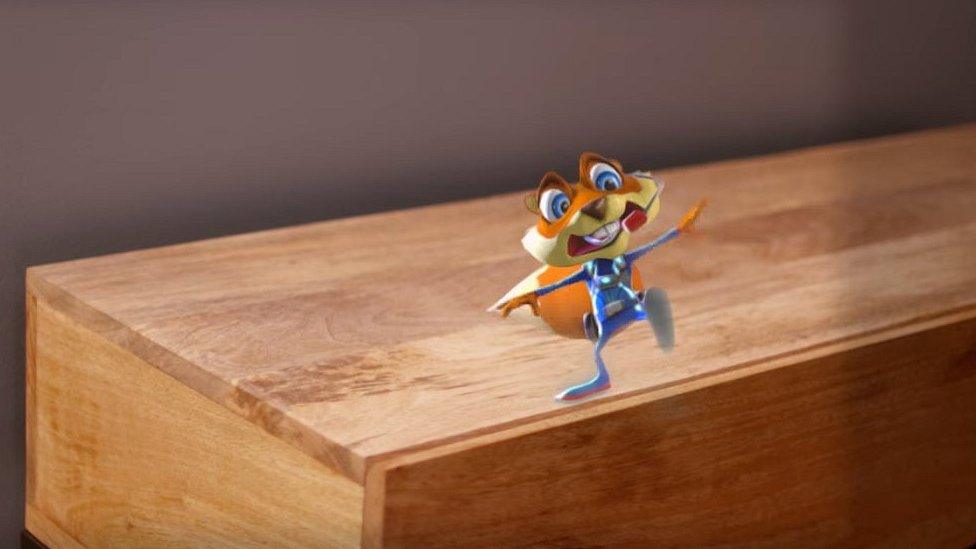
Conker is back - but not as we know him...
"Why would you ever do this? This is by far the worst thing that could possibly happen to the Conker franchise," commented one disappointed gamer on YouTube.
Microsoft said it had chosen Conker because he was "the right size to believably show up in the player's world" and was "famous for breaking the fourth wall and talking directly to the player".
Absent from the list of launch apps was Minecraft, the hugely popular building game, which had featured heavily in Hololens demonstrations and previews.
Tech specs
Microsoft says Hololens will run as a fully self-contained device running Windows 10, powered by an Intel chip.
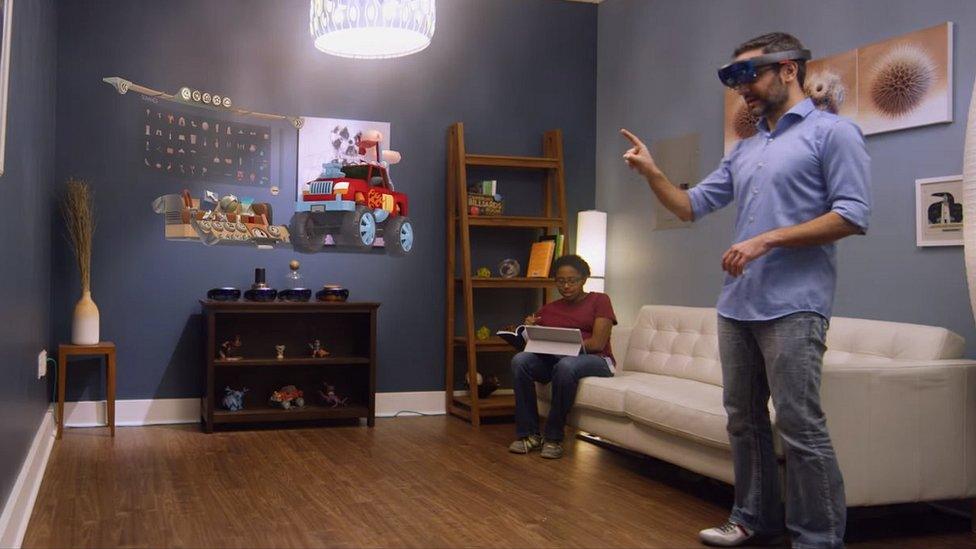
Wearers see "hologram-style" images overlaying the real world
The company says it has developed a unique "holographic processing unit" that can map the wearer's environment and recognise gestures while rendering images at the same time.
Gestures, glance and control allow the wearer to interact with the software, and the helmet supports Bluetooth accessories - the first of which is a "clicker" button users can hold.
"I think Hololens has the potential to find traction in niche commercial applications where pricing is less of an issue," said Mr Harding-Rolls.
"I see consumer AR as more embryonic than VR and still very much at an experimental stage."
- Published22 January 2015
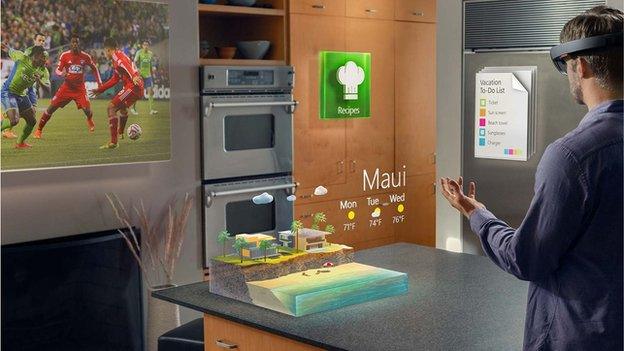
- Published6 July 2015
